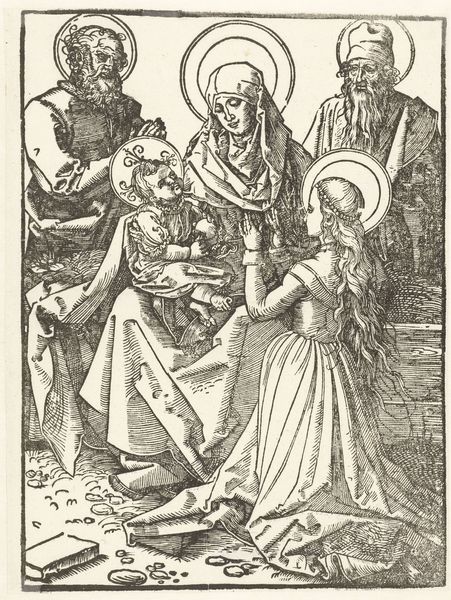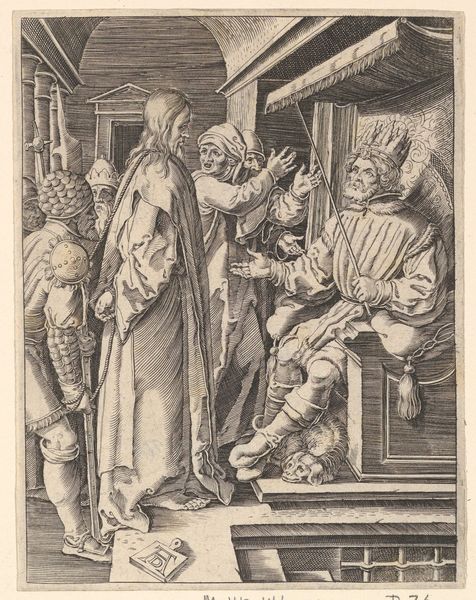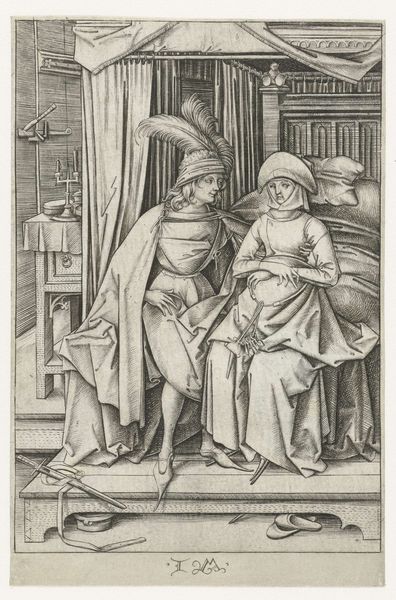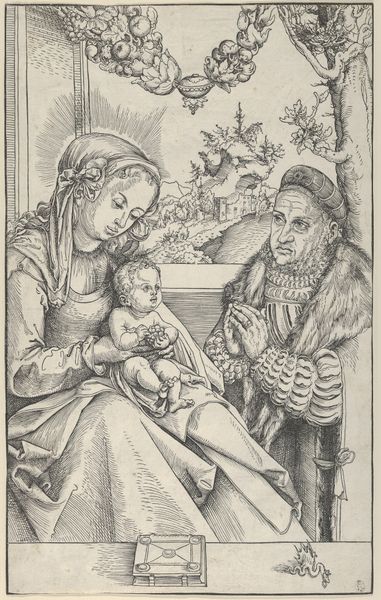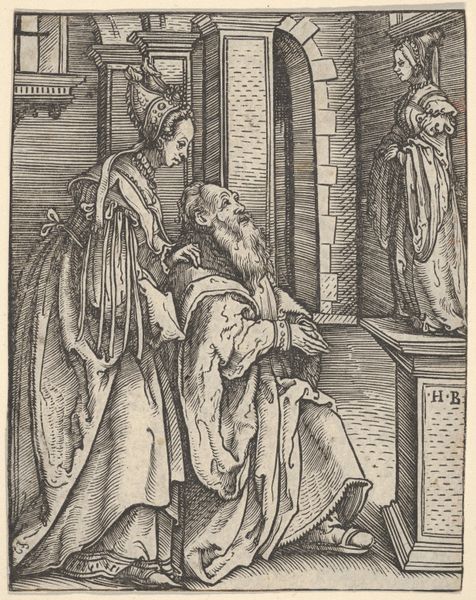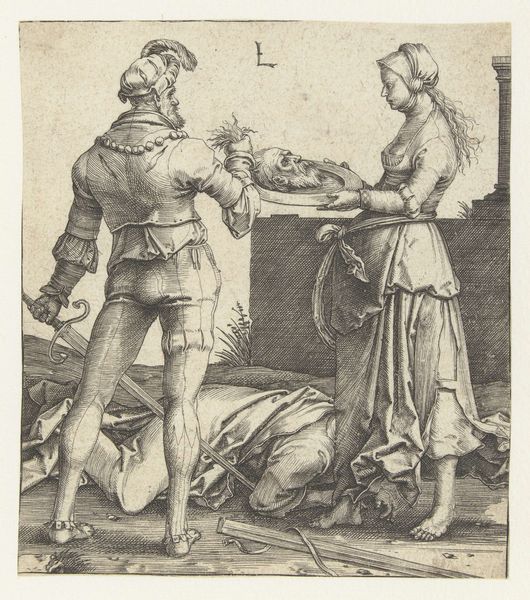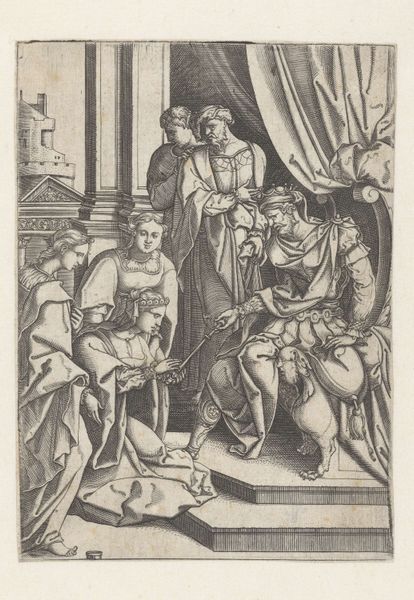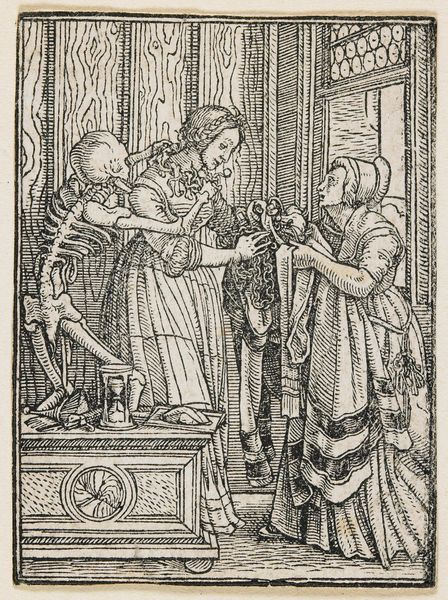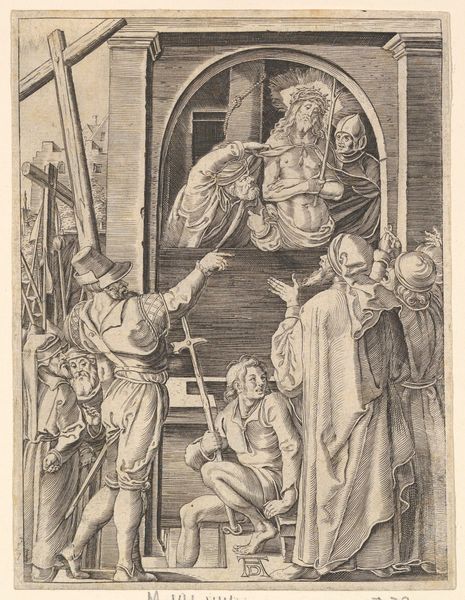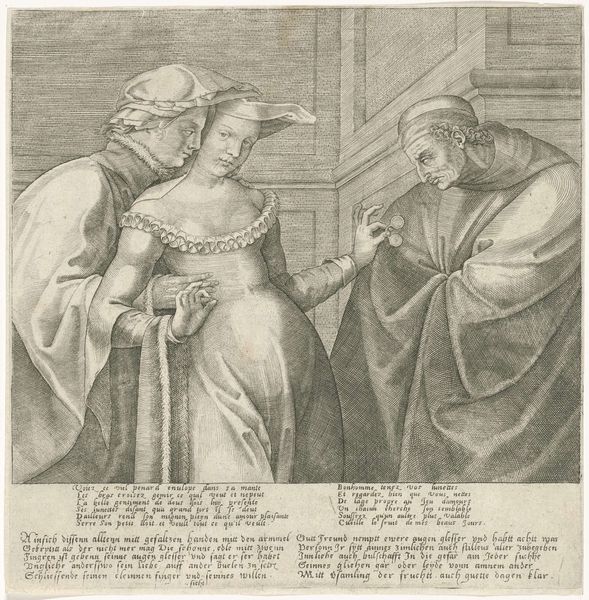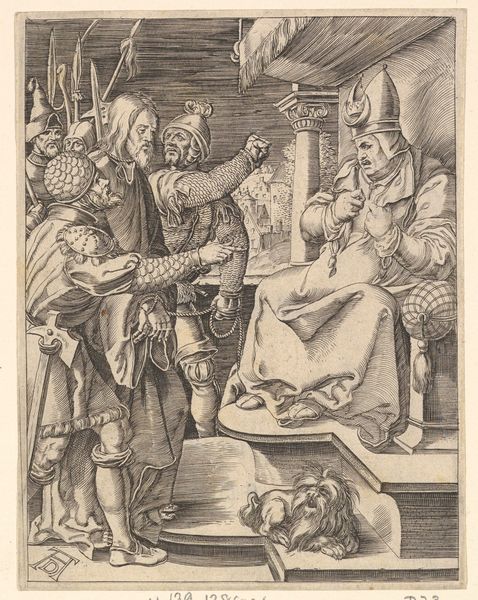
drawing, print, engraving
#
portrait
#
drawing
# print
#
figuration
#
personal sketchbook
#
line
#
portrait drawing
#
genre-painting
#
italian-renaissance
#
engraving
#
realism
Dimensions: 4 15/16 x 3 1/16 in. (12.5 x 7.7 cm)
Copyright: Public Domain
Editor: Agostino Veneziano's "Peasant and a Woman with Eggs," created sometime between 1514 and 1536, presents a really interesting depiction of everyday life rendered as an engraving. The texture looks fantastic, but there seems to be some tension in the air between the two figures. What do you see in this piece, particularly in the context of its time? Curator: The engraving offers us a fascinating snapshot into the socio-economic structures of the Italian Renaissance. It highlights the interactions—perhaps even the power dynamics—between different social classes. Notice how the peasant man is positioned above the seated woman. His gaze seems to convey authority, or at least a societal advantage, over the woman who is trying to sell her eggs. How might we understand this interaction in terms of gender roles and economic survival? Editor: It feels like more than just a simple transaction; there's an imbalance that's hard to ignore. I also wonder if the very act of representing these ordinary people elevates them, or is it just a detached observation? Curator: It’s both, potentially. While representing commoners was becoming more prevalent, we need to question who had the power to depict them, and for what audience. Was this created to idealize peasant life, to make a commentary about early forms of capitalism, or simply to satisfy a market interest in genre scenes? The positioning of the figures is also interesting. How do you think their proximity might affect our reading of their relationship? Editor: The close proximity feels deliberate and somewhat unsettling given their different stations, suggesting the limitations placed upon them. Their interaction feels transactional in a way that affects more than just their economies, maybe even something in their bodies and social positions. Curator: Exactly! So the print invites a more critical examination of labor, gender, and power within Renaissance society, far beyond a simple genre painting. Editor: That gives me a lot to think about—how art can both reflect and actively shape our understanding of history and power relations. Thank you! Curator: And how, by questioning the context of a work like this, we begin to perceive beyond the aesthetic.
Comments
No comments
Be the first to comment and join the conversation on the ultimate creative platform.
